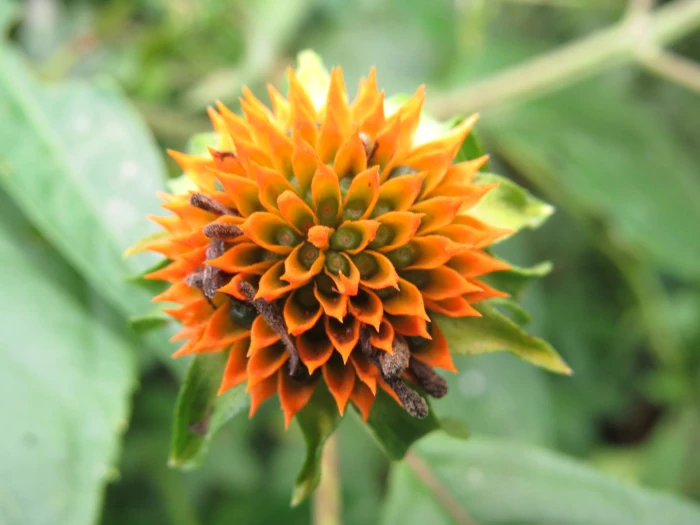Mexican Sunflower
(Tilesia baccata)
Mexican Sunflower (Tilesia baccata)
/
/

© Diogo Luiz
CC BY-SA 4.0
Image By:
© Diogo Luiz
Recorded By:
Copyright:
CC BY-SA 4.0
Copyright Notice:
Photo by: © Diogo Luiz | License Type: CC BY-SA 4.0 | License URL: http://creativecommons.org/licenses/by-sa/4.0/ | Uploader: diogoluiz | Publisher: iNaturalist |

























Estimated Native Range
Climate Requirements for Youngstown, Ohio
| This Plant | Your Site | Plant Suitability for Your Location | ||
|---|---|---|---|---|
| • Precipitation | 16" - 268" | 38" | Aquatic | Aquatic |
| • High Temp. | 66°F - 98°F | 85°F | Your summer temperatures are normal for this plant. | Excellent |
| • Low Temp. | 34°F - 74°F | 18°F | Your winter temperatures may be too cold for this plant | Too cold |
This plant should grow well at your location with about N inches per year (Y minutes per month) of irrigation.
Summary
Tilesia baccata, commonly known as Mexican Sunflower, Japanese Sunflower, or Tree Marigold, is a fast-growing perennial herb native to Central America and South America. It thrives in a variety of habitats including tropical forests, open areas, disturbed soils, and roadsides. This species is adaptable to a range of ecological conditions but is particularly common in areas with a history of disturbance. Tilesia baccata can reach a height and width of 6-10 feet (1.8-3 meters), displaying a bushy, upright habit. Its large, bright yellow flowers are showy and bloom prolifically from summer into fall, attracting pollinators such as bees and butterflies.
The Mexican Sunflower is valued for its vibrant flowers and rapid growth, making it an excellent choice for creating visual impact in a short period. It is often used in tropical and subtropical gardens as a specimen plant, for screening purposes, or in borders. It requires full sun to flourish and prefers medium or fast-draining loam or sandy soils. While it tolerates a range of soil conditions, it performs best with regular watering. However, it is drought-tolerant once established. Tilesia baccata can be invasive outside its native range, so it is essential to consult local guidelines before planting.CC BY-SA 4.0
The Mexican Sunflower is valued for its vibrant flowers and rapid growth, making it an excellent choice for creating visual impact in a short period. It is often used in tropical and subtropical gardens as a specimen plant, for screening purposes, or in borders. It requires full sun to flourish and prefers medium or fast-draining loam or sandy soils. While it tolerates a range of soil conditions, it performs best with regular watering. However, it is drought-tolerant once established. Tilesia baccata can be invasive outside its native range, so it is essential to consult local guidelines before planting.CC BY-SA 4.0
Plant Description
- Plant Type: Shrubs
- Height: 6-10 feet
- Width: 6-10 feet
- Growth Rate: Rapid
- Flower Color: Yellow
- Flowering Season: Summer, Fall
- Leaf Retention: Deciduous
Growth Requirements
- Sun: Full Sun
- Water: Medium
- Drainage: Fast, Medium
Common Uses
Bee Garden, Border Plant, Butterfly Garden
Natural Habitat
Native to Central America and South America, thriving in tropical forests, open areas, disturbed soils, and roadsides
Other Names
Common Names: Mexican Sunflower , Japanese Sunflower , Roborodo , Tree Marigold
Scientific Names: Tilesia baccata , Aspilia bolivarana , Caesulia scandens , Caesulia scandens , Chatiakella platyglossa , Chatiakella stenoglossa , Chylodia sarmentosa , Chylodia sarmentosa , Coreopsis baccata , Crodisperma aspera
GBIF Accepted Name: Tilesia baccata